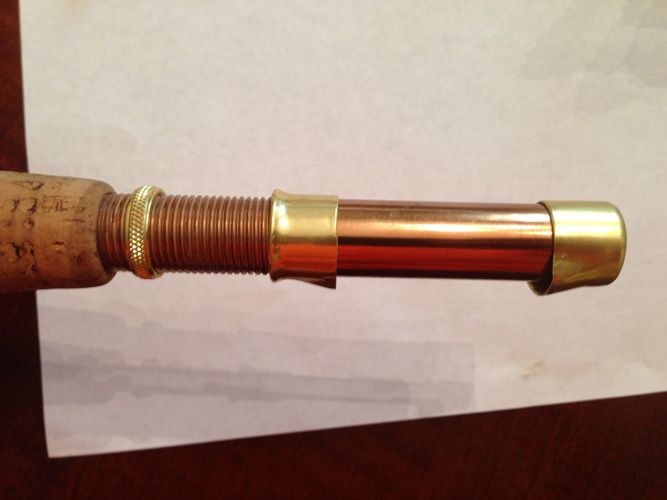Six-Gun
Member
- Joined
- Jul 30, 2013
- Messages
- 427
In the mail today, I received an old Horrocks-Ibbotson fiberglass rod that my old man handed down to me. Yes, I have done some research on it and realize that the classic rod collector crowd looks down on these as inferior production rods and not worth much, but despite lack of use and low monetary value, it was my dad's and I intend on at least giving it the dignity of catching fish with it.
Anyway, it has sat for years unused because after a friend gave it to him a long time ago, Dad never really got keen on fly fishing (something about hooking himself in the eyelid while trying to learn made him run the other way). So, needless to say, he hadn't a clue what line weight equivalent he had used all of those decades back.
Any ideas on what line weight I should use with this particular rod? Thanks for any help you can give.
Details on the rod shank as seen in the pcs below:
* 2-piece fiberglass rod (under the trade moniker "Thermoweld")
* Says "UTICA 1308 1/2" on the shank followed by the rod length, "8 1/2 ft."
* Reading around, it appears that these are mostly a late-1960's era build.


Anyway, it has sat for years unused because after a friend gave it to him a long time ago, Dad never really got keen on fly fishing (something about hooking himself in the eyelid while trying to learn made him run the other way). So, needless to say, he hadn't a clue what line weight equivalent he had used all of those decades back.
Any ideas on what line weight I should use with this particular rod? Thanks for any help you can give.
Details on the rod shank as seen in the pcs below:
* 2-piece fiberglass rod (under the trade moniker "Thermoweld")
* Says "UTICA 1308 1/2" on the shank followed by the rod length, "8 1/2 ft."
* Reading around, it appears that these are mostly a late-1960's era build.






